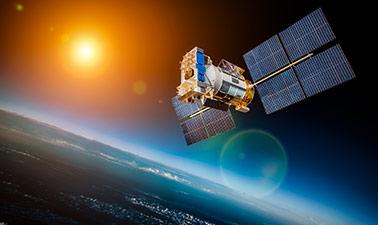
EPFLx: The Radio Sky II: Observational Radio Astronomy
by École polytechnique fédérale de Lausanne
About this course
This comprehensive course offers an in-depth study into the technological advancements and methodologies of radio telescope technologies, complementing the broader overview of various astronomical instruments across the electromagnetic spectrum. It starts by exploring the vast range of telescope technologies before delving deeply into the specificities and functionalities of single-dish radio telescopes and radio interferometers. This course also navigates through the foundational theories and application techniques in observational radio astronomy, capped with practical guidance for conducting scientific experiments and proposal writing.
What students will learn
- Detailed knowledge of different types of telescopes, emphasizing radio astronomy instruments.
- Operational principles of radio telescope technologies, including single-dish instruments and interferometers.
- Understanding of fundamental radio astronomy concepts such as flux, luminosity, and brightness temperature.
- Skills in radio interferometric imaging techniques, including Fourier transform and aperture synthesis imaging.
- Competence in the use of the Radio Interferometer Measurement Equation for calibration and self-calibration.
- Efficient strategies for data reduction, inspection, and analysis in radio astronomy research.
- Experience in preparing and developing observational proposals.
Prerequisites
To enroll in this course, participants are expected to have:
- Solid foundation in algebra, basic mathematics, and physics concepts.
- Basic understanding of computer science principles.
- Previously completed the introductory MOOC, 'The Radio Sky I'.
Course Coverage
- Introduction to various telescope technologies including optical, UV, X-ray, Gamma, and radio telescopes.
- Detailed exploration of single-dish radio telescopes and interferometers.
- Observational radio astronomy, including study of flux, luminosity, and brightness temperature.
- Theories and practical application of radio interferometric imaging.
- Radio-astronomical data reduction techniques, including calibration and imaging processes.
- Guidance on writing effective observational proposals for radio observatories.
Who this course is for
This course is suitable for advanced students, researchers, and professionals in the field of physics and astronomy who are interested in expanding their expertise in radio astronomy and telescope technologies.
Real-world applications
Skills acquired from this course can be applied in several ways, including:
- Conducting advanced research and development in radio astronomy.
- Enhancing the design and functionality of radio telescopes and observatories.
- Developing innovative methods and techniques for radio astronomical data analysis.
- Writing proposals and securing grants for astronomical observations and research projects.
Syllabus
- Week 1: Introduction to optical and radio telescope technologies.
- Week 2: Continued studies on telescope technologies and introduction to radio interferometry.
- Week 3: Principles and observations in radio astronomy.
- Week 4: Fundamental theories in aperture synthesis imaging.
- Week 5: Procedures from collecting visibilities to creating images using interferometric arrays.
- Week 6: Advanced topics in radio interferometric imaging and practical data reduction techniques.




